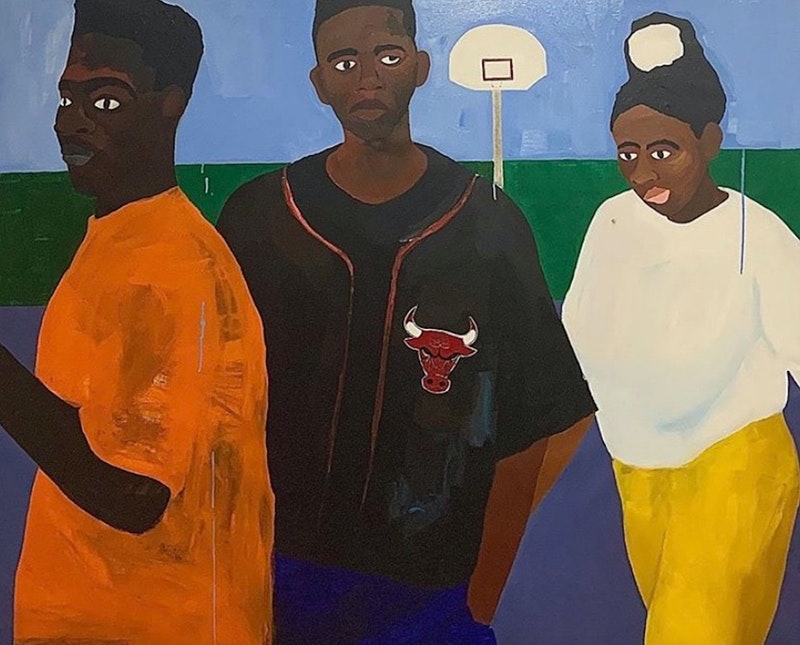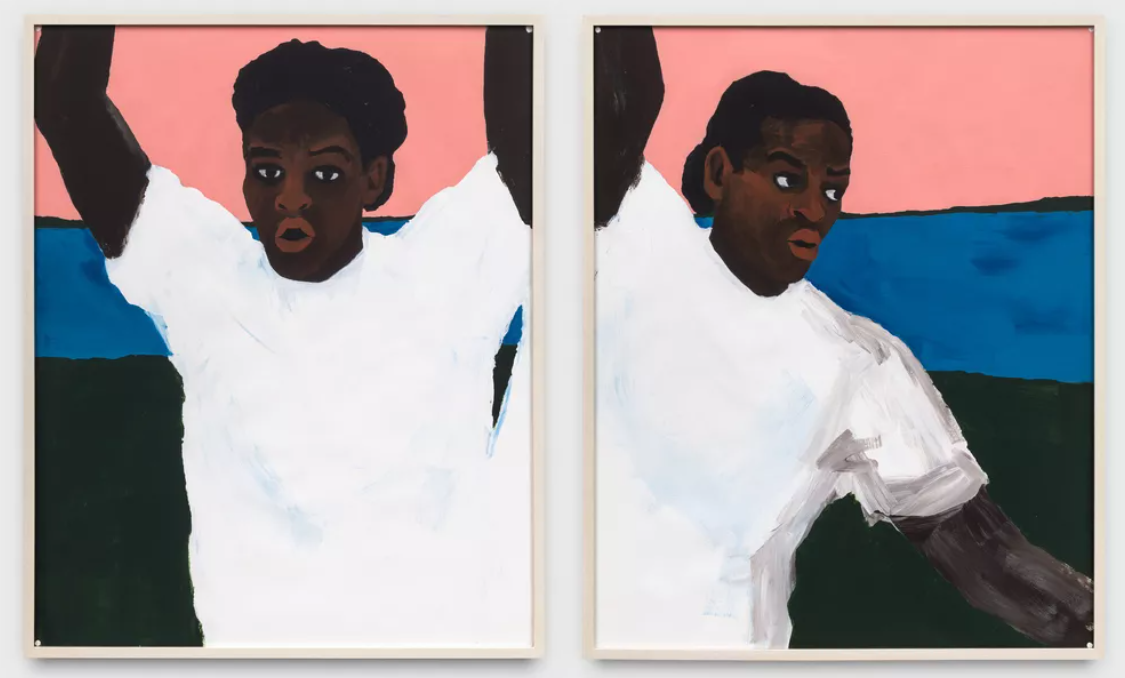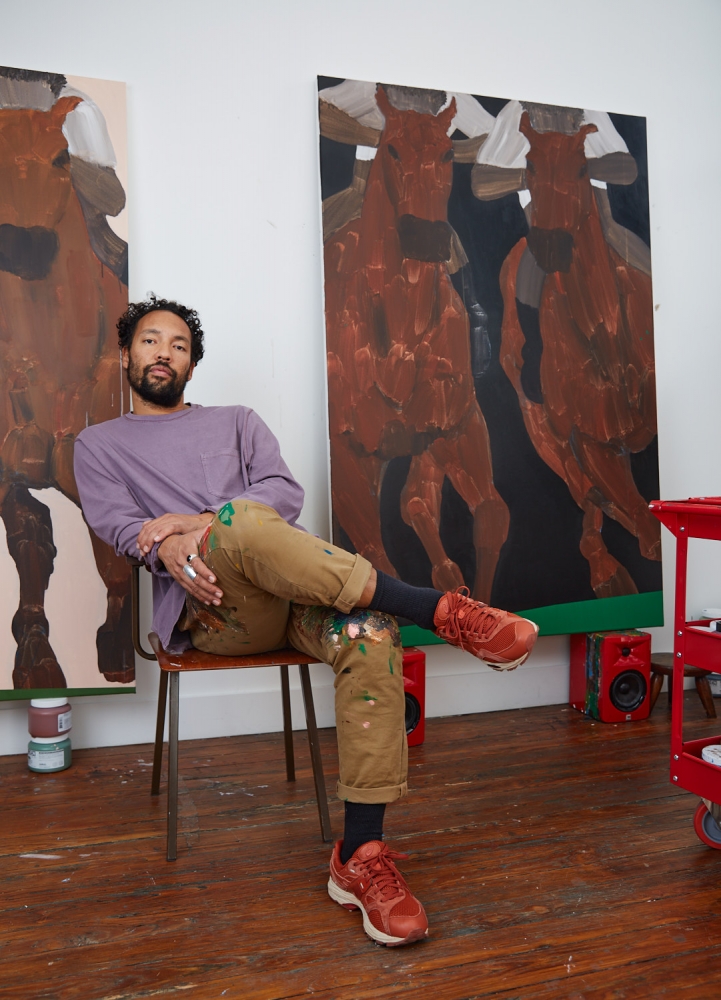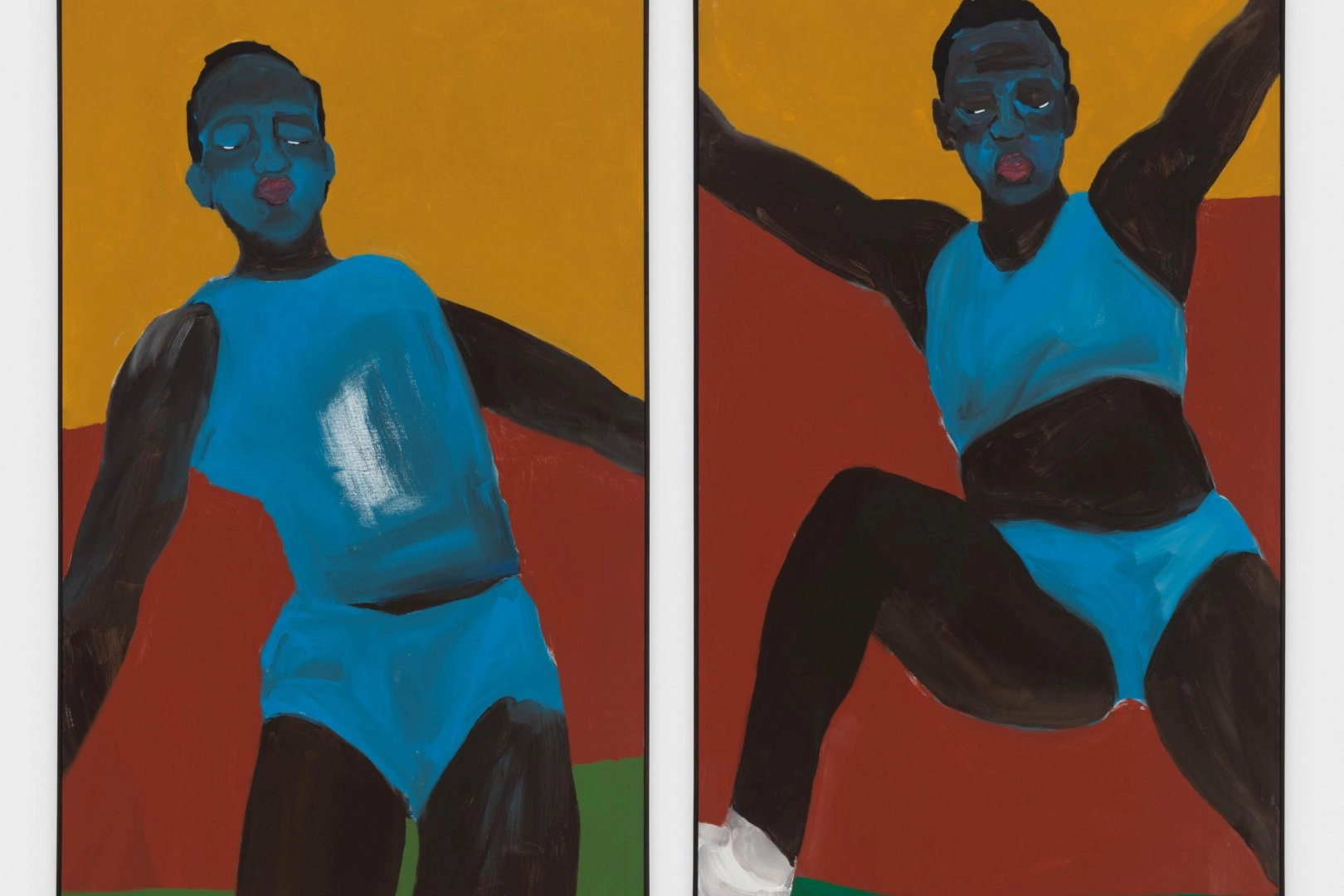Speed, power, dynamics. This seems to be a case of nomen omen, since the word strong is already contained in his name. Alvin Armstrong is a painter fascinated by movement and sport. His work, however, generally examines the social and political background of black culture in the US within the context of the sports environment. His technique is venerated by critics and it seems unbelievable that he started painting only four years ago.
With unreal accuracy of a few strokes of the brush, he manages to capture the structure of the human body running, jumping, urging a horse to gallop, batting a baseball or celebrating victory. This knowledge of anatomy is based primarily on his studies of medicine and acupuncture. He is familiar with each muscle and point on the body and expertly transforms this insight into figures on canvas. He confirmed this in an interview for Artsy: “My understanding of proportion, the way the skin bounces back, the touch and temperature of the skin, knowing every bone in the body and all the joints and ligaments—I feel so drawn to the form of the body. I’m really working on how creative I can be in using that knowledge and information and changing how I deliver and express it.”

Let’s return for a bit back to what we see in Armstrong’s paintings. His compositions are often divided into several colour blocks in which he materialises the thick tension of his topics. The athletic performances are further placed into socio-historical contexts. Last year, Armstrong launched an important solo show called Give & Take at Anna Zorina Gallery in New York where he presented a series of paintings focusing on the position of black athletes in America. He discussed his artistic intent with Something Curated magazine: “What is often celebrated and revered about Black athletes, their power, their speed, their strength, are things that are seen as threats to society if the athletes’ uniform isn’t present. Those same attributes have been the cause of death for unarmed Black people in America”. Next to paintings dedicated fully to sport the gallery also contained paintings in which it remained intentionally unclear whether the figures they portray are raising their hands to receive a pass on the pitch or because there is a gun being pointed at them.

The topic of sports isn’t a random choice for Armstrong. His father received a basketball scholarship for university which helped his family. Armstrong stated for Athletemag: “We understood from a young age that excelling at sports could potentially mean free education and bettering our circumstances. Sports have been the backdrop of my life and set a standard of achievement that has translated to my painting practice today. I think professional sports, specifically, play a complex role in the United States. Americans are often unified by sports and they provide some reprieve in difficult times like the pandemic…At the very least, the energy of sport is especially interesting to convey through visual arts, no matter the medium. I’m obviously not the first artist to be inspired by the action, power and socio-political aspect of competitive sports, but because of my own experience as an athlete, it will probably continue to be a throughline in my work.”
%20(1).jpg)
The author’s work lies in large-format canvases on which he paints figures on intentionally minimalist colourful backgrounds in layered acrylic, enforcing the urgency and intimacy of the depicted topic. The paintings come together intuitively, Armstrong claims not to try and think too much over his choice of colours. This doesn’t mean, though, that they aren’t important. Quite the contrary. He leaves the backgrounds until the last step in his process and if he feels that the colour doesn't suit the motif he just keeps re-painting it until he feels that it finally works.

How did an acupuncturist become a painter? Alvin claims to have always had a feeling that he’s looking for something in his life. He has tried a variety of occupations and even studied medicine. After completing his studies in acupuncture he felt that he struggles to support his patients’ health when he doesn’t lead a healthy lifestyle himself. He ended up dropping old habits and instead looked for something to fill the time he previously spent in bars. After an incentive from a friend he visited the Brooklyn Museum and decided to try painting. This soon became a passion that swallowed Alvin up. He spent the first two years painting for up to 15 hours a day and from the start, he felt that he finally found what he was missing. Since then Armstrong remains obsessed with painting.




